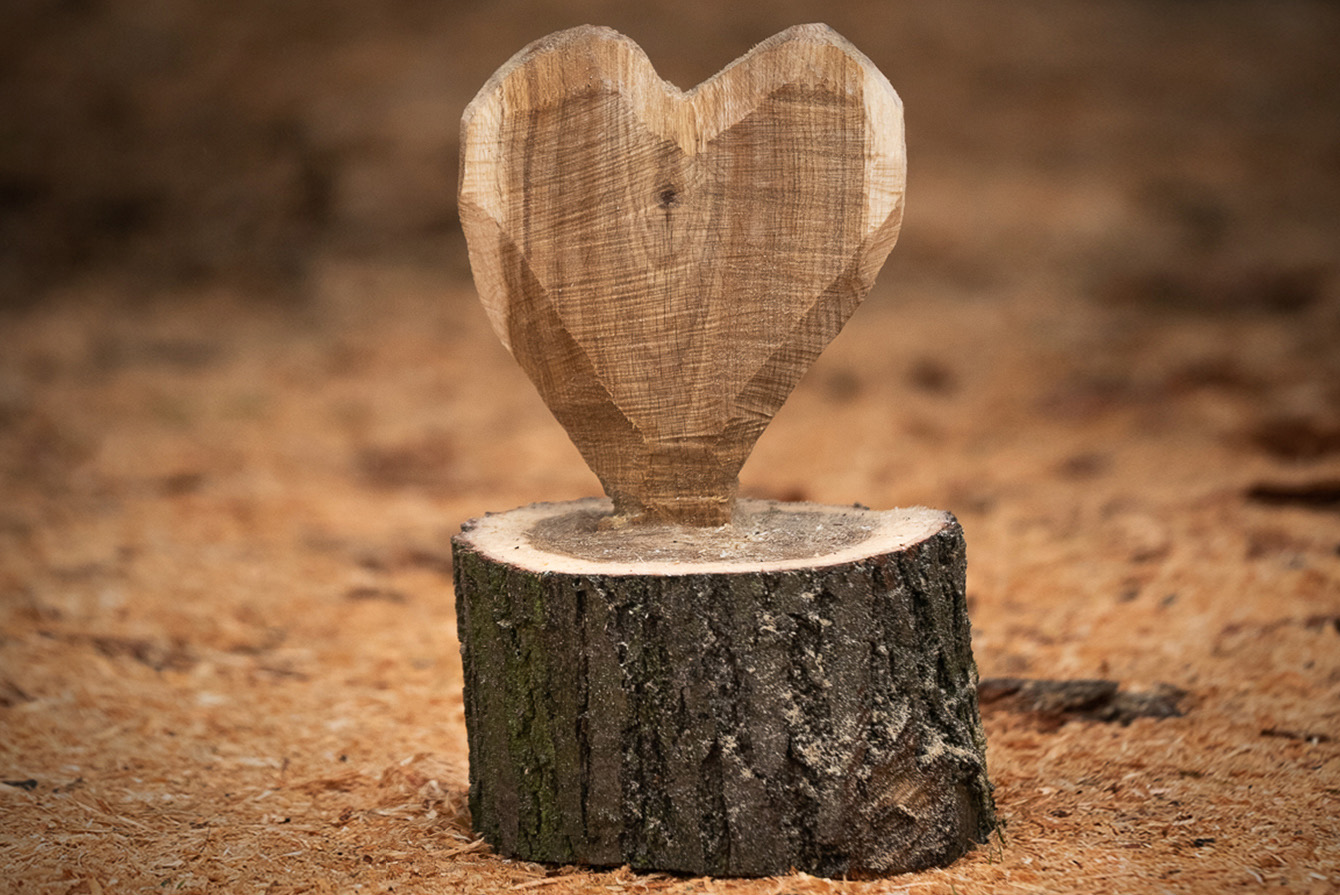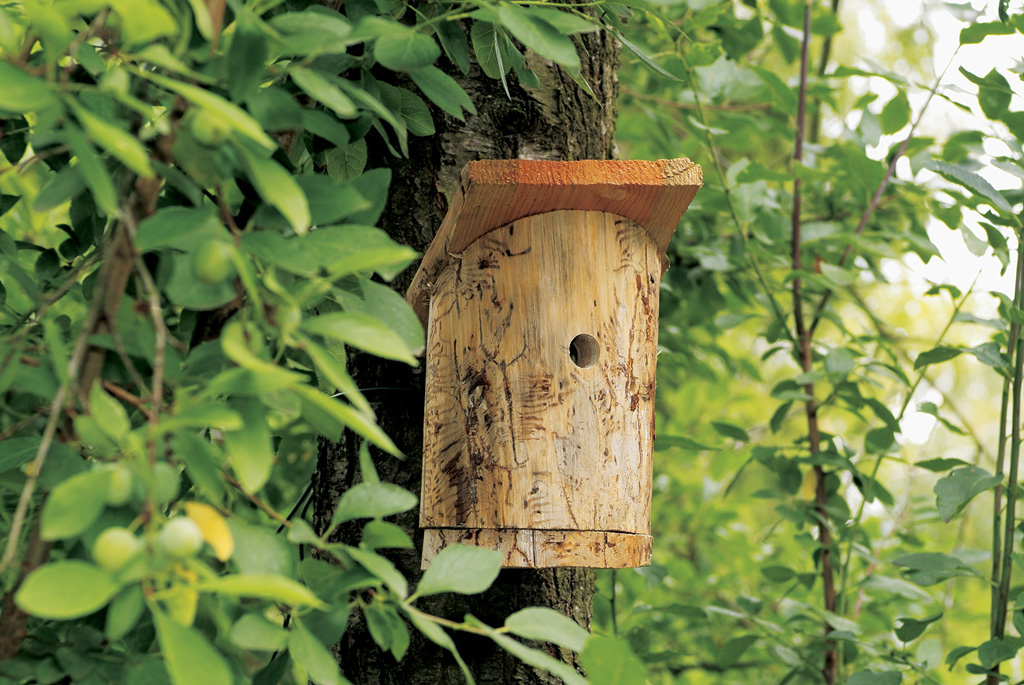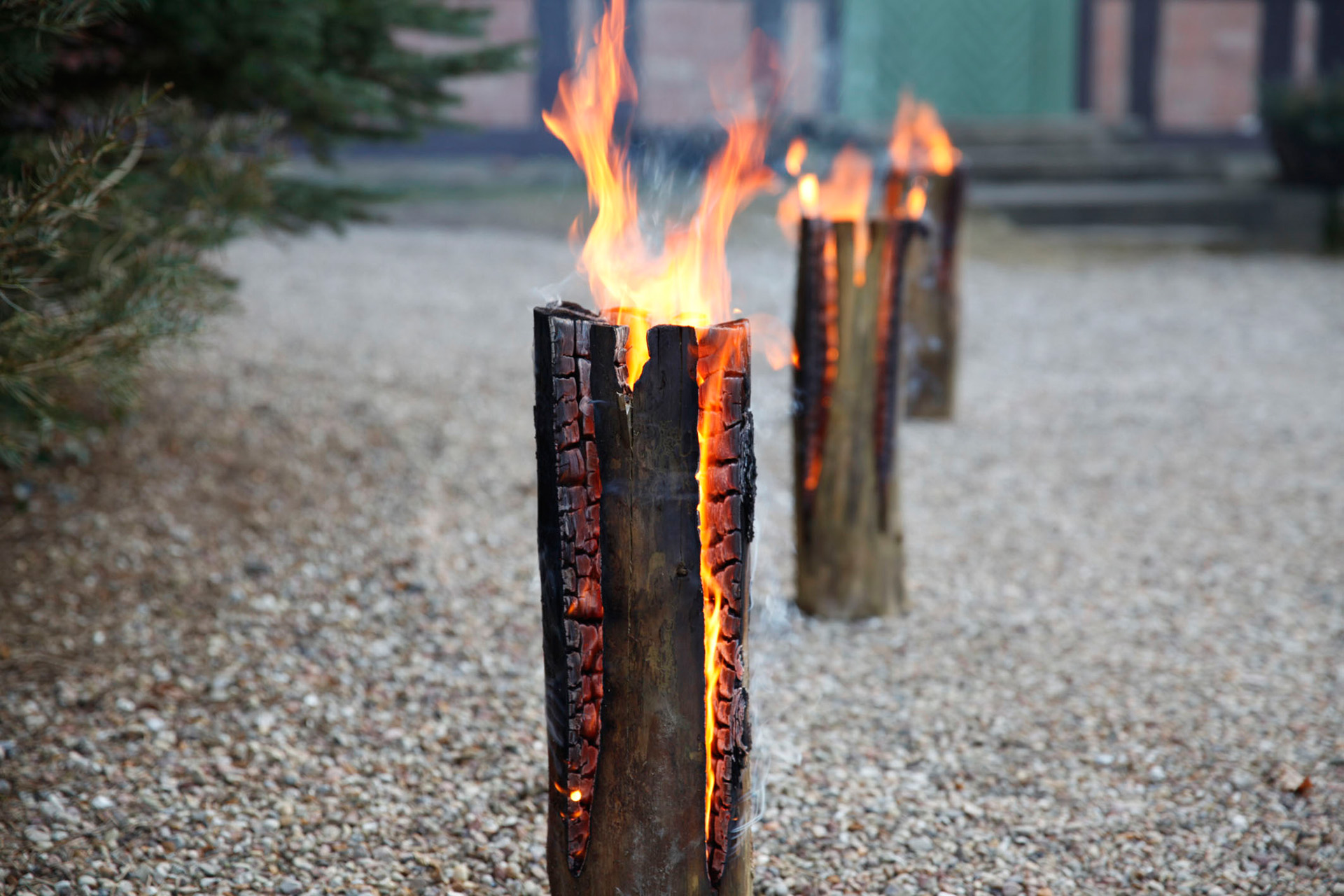How to make a DIY garden bench
Looking to accessorise your garden with something useful and unique? We can help with these DIY project instructions for an unusual outdoor bench.
28.03.2025

DIY garden bench: preparation
A rustic garden bench makes a beautiful and inviting adornment for any garden – even more so if it’s a one-off piece that you’ve designed and made yourself. You can make your own garden bench as a DIY project that takes just a few steps and less than day to build. Before you can start you need the right wood and your chainsaw at the ready.

Selecting the wood for your bench
We’ve used pine for our DIY outdoor bench; larch is also extremely weatherproof and ideal for garden DIY projects, and we also recommend ash or beech. When deciding what wood to use you need to consider the different characteristics and your own needs. Coniferous woods like pine and spruce harden quickly in summer heat, so may not be the right choice for you; pine in particular can absorb a lot of moisture, so you need to treat it to protect it against weathering and decay.
Whatever you choose, a good rule of thumb to remember is that the drier the wood, the better suited it is for building with, as there is less risk of cracking. You can keep your DIY bench looking great with the right care, such as applying oil regularly.

Wood care
Pine
With pine-built garden furniture you need to apply protective oil or varnishes regularly. You should also treat the wood before assembling the individual parts, for complete protection and a simpler initial process.
Use a specific pine cleaner if your bench gets dirty. Smaller marks or rough areas can be addressed with sandpaper.

Ash
Natural oils and wood waxes are ideal for treating ash. Because ash is very hard, you need to repeatedly apply oil to it at 30- to 40-minute intervals until it is saturated. Once the wood stops absorbing oil, it is well protected and the surface of your garden bench will dry to an elegant lustre.

Beech
Beech is nice to work with on a DIY task. However, it absorbs a lot of moisture so you need to protect it appropriately. For a quick clean, all it needs is wiping with a soft, dry cloth; if it’s a bit dirtier, use a damp cloth without cleaning agent on the surface.
Committed to your safety: protective equipment
Tackling garden DIY projects with powerful tools is fun and means you can extend your abilities, which is great as long as you are relying on effective and safe protective clothing while using them. Always wear personal protective equipment when working with your chainsaw. This includes a helmet, cut protection trousers, safety boots, and more. The owners manual for your product contains more details on this. Fully familiarise yourself with the tool before you use your chainsaw for the first time, and check it is in flawless condition before each use. On request, your STIHL dealer will be happy to prepare your tool for its first use, and will also advise you on models and sizes of protective clothing that you can try at your leisure. Please remember that personal protective equipment is no substitute for safe working techniques.
DIY garden bench: what you need

Backrest
- Two wooden posts (the length depends on the required height of the bench backrest, can be shortened if necessary)
- A plank (approximately 120 cm long)
Bench seat
- Straight log (approximately 30 cm in diameter)
Feet
- Two logs (approximately 30 cm long, 30 cm in diameter)
Tools
- STIHL chainsaw
- Drill
- 12 screws (approximately 150 mm long)

Full DIY power
The right chainsaw for your DIY projects
Using the right tool makes crafting, building and DIY even more fun. We recommend the following chainsaws for your indoor and outdoor wood projects.
Time to build
Now you’re ready to start making your rustic outdoor bench. The DIY garden seating needs to be solid and sturdy, so we recommend you build it on-site, at the spot you plan to keep it. Before you start your chainsaw, make sure you have enough space to work and that your working area and surroundings are safe.
DIY garden bench: step-by-step instructions
First you need to secure the largest log so that it doesn’t roll away; you can use wooden wedges for this. In the next step you will be splitting the log along its length, and one half will form the seat of your bench.
STIHL professional tip: It’s always good DIY practice to mark where you plan to make the cut on the wood beforehand.
Important
When working with your chainsaw, there is a risk of kickback, pull-in and recoil. These forces can be dangerous for you, so you need to try and prevent them if possible. You can find all the important information about reaction forces and how to avoid them in the owners manual for your STIHL chainsaw.
Split the wood in two stages to avoid damaging your chainsaw and for a better result: first cut vertically along the mark to a depth of about halfway through the log. Turn the log over and complete the split by cutting through from the other side.

- Mark the middle of both short logs.
- Make a v-shaped cut down to the middle of the log.
- The cuts on both feet need to be deep and wide enough to hold the bench seat made from half of the log you’ve already split.
- Fit the seat into the grooves of the feet and fix it in place with screws, driving them from above, through the seat into the feet. It’s a good idea to pre-drill the screw holes due to the length of the screws.

- Secure the two posts as uprights, using screws to attach them to the feet and the seat.

- Finally, screw together the backrest plank and the uprights, at a height that means you can lean back while sitting down.
- Make sure the position is comfortable.
- Fix the backrest using two screws per upright so that the wood doesn’t warp.


Summary: DIY garden bench
- Pine, larch and ash are ideal materials for outdoor projects
- Always wear personal protective equipment in accordance with the owners manuals for your tool
- Make sure your working area and surroundings are safe
- Split a large log to make the seat
- Fit the seat onto the prepared feet
- Add uprights to support the backrest of the bench
- Fix the backrest in place with a drill and screws





